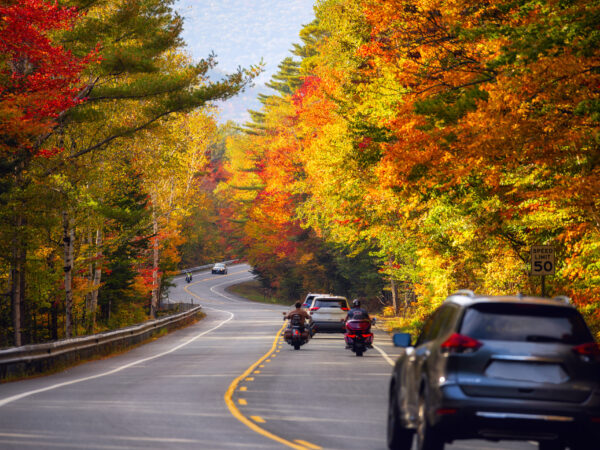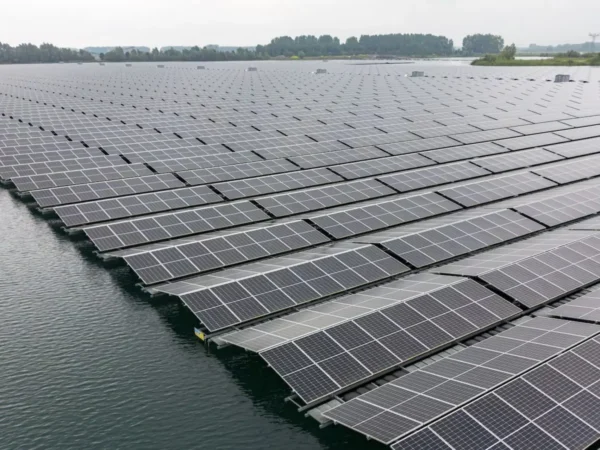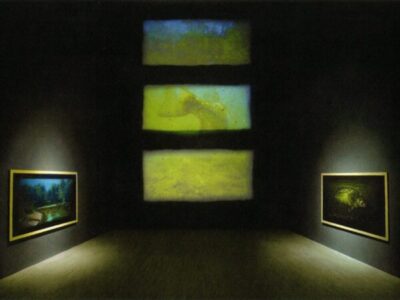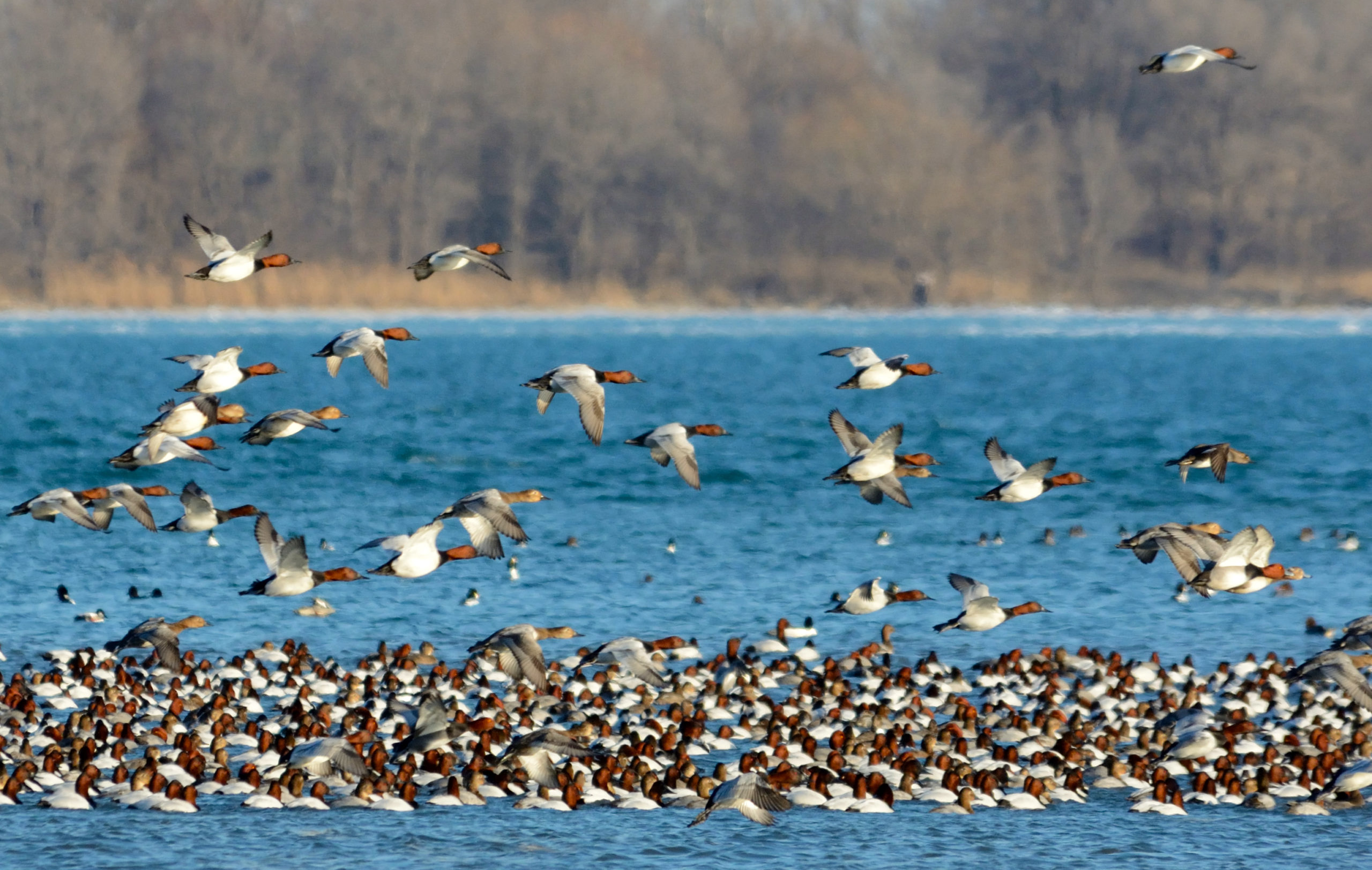
Great Lakes Moment is a monthly column written by Great Lakes Now Contributor John Hartig. Publishing the author’s views and assertions does not represent endorsement by Great Lakes Now or Detroit Public Television.
The lower Detroit River is a unique urban refugium where the tapestry of life has been woven with elegance, where the music of life has been rehearsed to perfection for thousands of years, where nature’s colors are most vibrant and engaging, where time is measured in seasons, and where the canvasback race across the water takes center stage.
Many canvasback ducks – after nesting in spring and early summer in the North America’s Great Plains —migrate in fall to overwintering grounds on Lake St. Clair, Detroit River and Lake Erie. It’s a wildlife observation opportunity that is sure to create a sense of wonder!
“I thoroughly enjoy the large rafts of canvasback that grace our lower Detroit River each winter,” notes Bob Ranka, lifelong duck hunter on the lower Detroit River. “To me and other waterfowlers, they are the king of ducks.”
It is the canvasback’s wedge-shaped head and elegant appearance that have afforded the moniker of the “aristocrat of ducks.” They are the largest of the North American diving ducks and feed on underwater plants. Their name was inspired by the male’s white back and sides, which reminded English settlers of canvas fabric.
The male, or drake, is an arresting sight, with its red-brown head and neck, scarlet-red eyes, and gleaming whitish body bookended in black. The female, or hen, has a pale brown head, with a pale grayish-brown body. The head of both drakes and hens is easily distinguished by its sloping forehead into a dark bill, giving it a distinctive silhouette.
Canvasbacks breed mostly in the Prairie Pothole Region of North America, a rich complex of wetlands and grasslands that stretches over five U.S. states and three Canadian provinces.
The Prairie Pothole Region is the core of what was once the largest expanse of grassland in the world – the Great Plains of North America. It got its name from a geological phenomenon that left its mark beginning 10,000 years ago. When the Laurentide Ice Sheet from the last ice age receded, it left behind millions of shallow depressions that are now wetlands, known as prairie potholes.
The potholes are rich in plant and aquatic life, and support globally significant populations of nesting waterfowl, shorebirds and grassland birds. The area is often referred to as North America’s “duck factory” because it is estimated that about one-third of the continent’s waterfowl breeding population nest within it.
Agricultural development in this region caused considerable draining of wetlands, and this has taken its toll on waterfowl. Ducks Unlimited considers the Great Plains and Prairie Pothole Region are No. 1 on the list of 25 most important and threatened waterfowl habitats on the continent.
Canvasbacks seldom go ashore and even sleep on the water with their bill tucked under their wing. They are one of the fastest ducks in the sky, clocking airspeeds around 60 miles per hour. Because their feet are placed far back on their body for swimming and diving, the canvasback has difficulty walking on land and cannot quickly lift off the water like, for example, a mallard. Instead, the canvasback must flap its wings and get a running start to lift off the water surface before taking flight. This is a sight sure to entertain and fascinate.
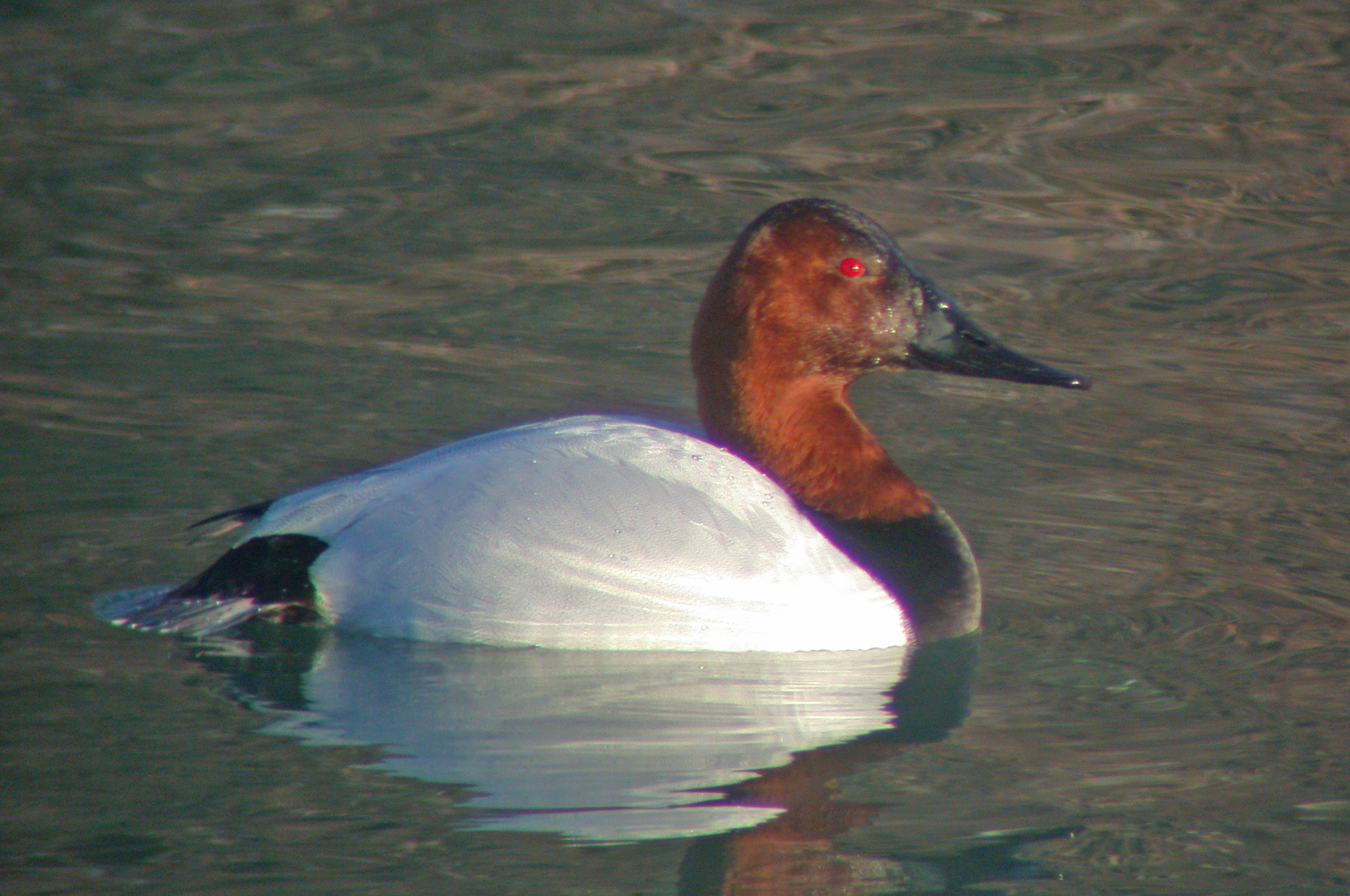
Male canvasback duck on the Detroit River (Photo Credit: Allen Chartier).
The scientific name for canvasback is Aythya valisineria. Aythya is a genus of diving ducks and comes from an Ancient Greek word meaning a sea-dwelling duck. The species name valisineria comes from the wild celery Vallisneria americana, whose buds and underground stems, called rhizomes, are the canvasback’s preferred food during the winter season. Extensive wild celery beds in the lower Detroit River are what attract canvasbacks and other diving ducks.
By mid-October, the fall migration for canvasbacks is well underway. Canvasbacks require large amounts of food to fuel their migration and can dive as deep as 30 feet for aquatic plants. Some flocks overwinter regularly on the lower Great Lakes and in particular in Lake St. Clair and along the St. Clair and Detroit rivers because of the abundance of food, particularly wild celery. By mid-April, migrating canvasbacks are moving north again to their breeding grounds in the Prairie Pothole Region.
More than 3 million waterfowl are estimated to migrate through the Great Lakes area annually, and more than 300,000 diving ducks, including canvasbacks, have been documented at one time on the lower Detroit River. As a result, the lower Detroit River is designated as an Important Bird Area by BirdLife International – meaning it is globally significant for congregating waterfowl.
Huge canvasback rafts up to several miles long have historically been seen in this corridor. However, loss of wetlands in the Prairie Pothole Region, overhunting, water pollution and droughts reduced the population over time. Today, special waterfowl protections provided under the Migratory Birds Convention Act of 1917, water pollution control programs under the 1972 Clean Water Act and the 1972 U.S.-Canada Great Lakes Water Quality Agreement, wetland conservation efforts in the Prairie Pothole Region, and conservation efforts of the Detroit River International Wildlife Refuge and Pointe Mouillee State Game Area are all helping to make sure that this unique waterfowl species and its habitats are protected for future generations to enjoy.
Both the Detroit River and western Lake Erie have also been identified as one of 34 waterfowl habitat areas of major concern in the U.S. and Canada in the North American Waterfowl Management Plan. To no surprise to waterfowl hunters, Ducks Unlimited has identified Detroit as one of the top 10 metropolitan areas for waterfowl hunting in the U.S.
“Canvasbacks are a prize harvest for duck hunters, and one of the top birds to view for birdwatchers,” said Joe Robison, southeast regional supervisor for the Michigan Department of Natural Resources. “The best places to view canvasbacks in late winter are off of Lake Erie Metropark, along East River Road on Grosse Ile, and off Point Mouillee State Game area.”
Everyone should witness this winter thrill of a flock of canvasbacks running across the water to take wind. I hope you get a chance to meet these legendary birds up close and personal.
John Hartig is a board member at the Detroit Riverfront Conservancy. He serves as a Visiting Scholar at the University of Windsor’s Great Lakes Institute for Environmental Research and has written numerous books and publications on the environment and the Great Lakes. Hartig also helped create the Detroit River International Wildlife Refuge, where he worked for 14 years as the refuge manager.
Catch more news at Great Lakes Now:
Great Lakes Moment: Kirtland’s warblers are thriving in Michigan
Great Lakes Moment: Small habitat patches can have big ecological impact
Featured image: A raft of Canvasbacks on the Detroit River in Ecorse, Mich. (Photo Credit: Mark H. Messer)
1 Comment
-
Hello John,
Thank you for this very informative piece. We are fortunate to live in this amazing location.


